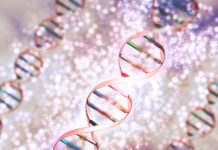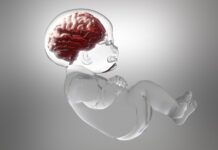You are what you eat—but what does that mean when suddenly you find yourself putting ketchup on bananas?
In soap operas, a strange craving for ice cream and pickles is a sure sign of a pregnancy in the story line, and we have all heard of a friend who suddenly wanted to eat lots of red meat, or completely avoided their regular coffee fix.
In fact, at least 75 percent of pregnant women crave specific foods at some stage during their 40 weeks.
It might come as no surprise that the most popular craving is for sweet, fatty foods, such as chocolate or donuts, followed by salty snacks and spicy foods, but this does vary according to your background. In Tanzania, for example, meat is the number one pregnancy craving, with mangoes, yogurt, and oranges coming close behind, whereas Cambodian women crave significantly spicy and salty foods.
The flip side of cravings are food aversions, which can strike just as unexpectedly. The sudden and compulsive nature of a food craving or aversion can be very surprising; you simply must have that burned toast with lots of butter, no matter the time of day or night. When do these curious likes and dislikes strike?
Food cravings seem more marked in first pregnancies though researchers couldn’t pinpoint a common time when they started for the women asked.However, 60 percent of food aversions begin during the first trimester when nausea kicks in, according to the journal Appetite. Aversions seem less troublesome after the first trimester, but cravings can continue throughout pregnancy.
A study from the same journal also found that women consumed significantly more sweet food during the second trimester, while University of Connecticut researchers have tracked an increase in cravings for salty foods as the weeks progress. So, what’s going on? Some commentators say cravings demonstrate the body’s intuitive knowledge of the nutrients it lacks.
While this might be true for dairy cravings, given that the average woman gets only three-quarters of the calcium she needs, it can’t be applied to salty snacks. Though we do need a little extra sodium as our blood volume increases, most of us already eat too much salt. There is no good evidence to support this theory.
Another theory suggests that food aversions are a built-in protective mechanism safeguarding mother and baby from environmental toxins. Witness the numbers of women who suddenly find the very thought of coffee nauseating, especially during the early weeks of pregnancy.

Many toxic plants share its bitterness and pungency. A more likely cause of both cravings and aversions is hormonal change. Researchers have tracked cravings in relation to levels of progesterone and prolactin, which can influence appetite. Hormonal changes have a sensitizing effect on our sense of smell and taste, and there seem to be strong links, too, with the texture of the foods craved. Ice is a popular pregnancy craving for the delicious crunch as much as its cooling and hydrating effects.
One study found that pregnant women who noticed a change in their sense of smell had substantially more cravings.
There’s evidence that cravings are influenced by what we grow up thinking we should crave, such as fruit and dairy that traditional Ayurveda medicine considers cooling, or the popular clichés we see on television. Cravings can intensify during periods of anxiety, and pregnancy can be an unsettling time.
It’s tempting to turn to comfort foods, and many pregnant women express a longing for bland childhood favorites, such as grilled-cheese sandwiches, pudding, or buttered pasta. There may be value in this, since carbohydrates boost levels of the hormone serotonin, helping you feel relaxed.




















